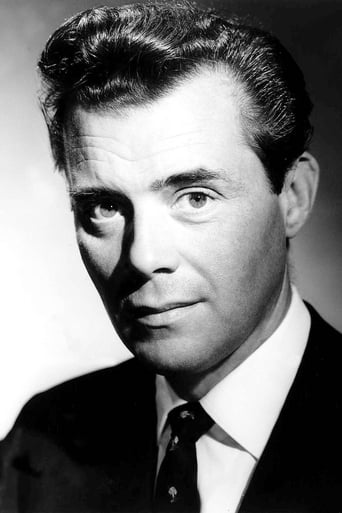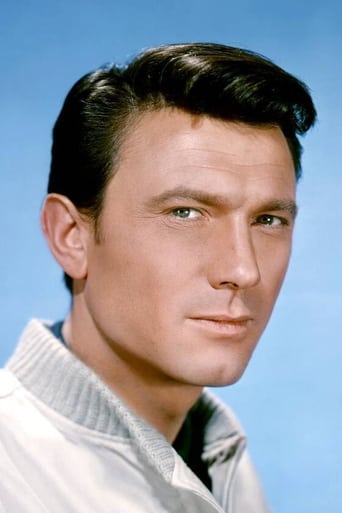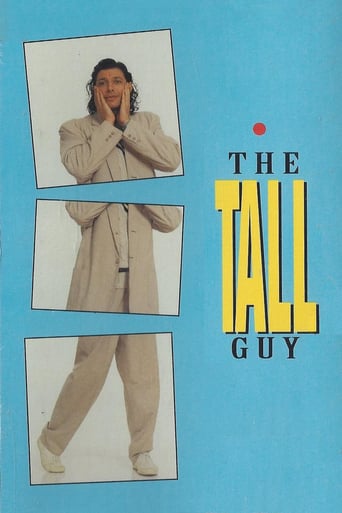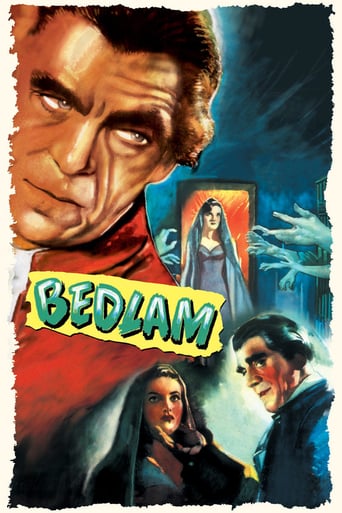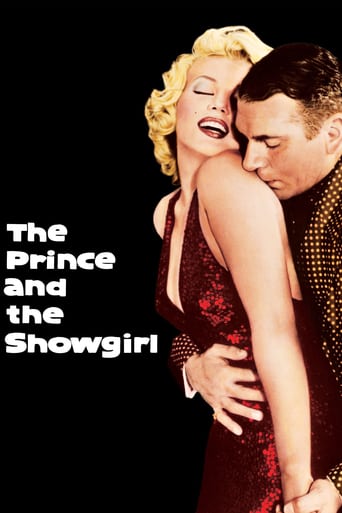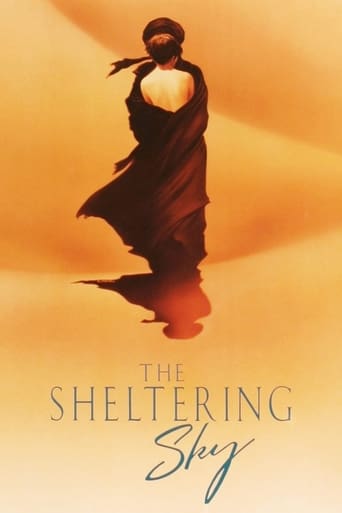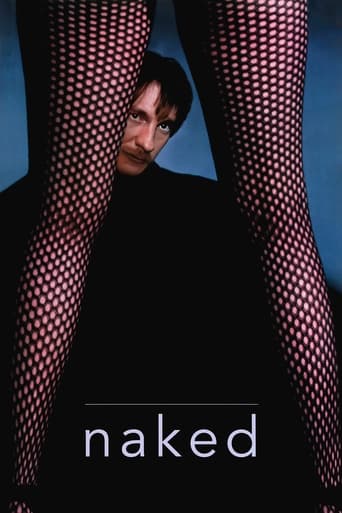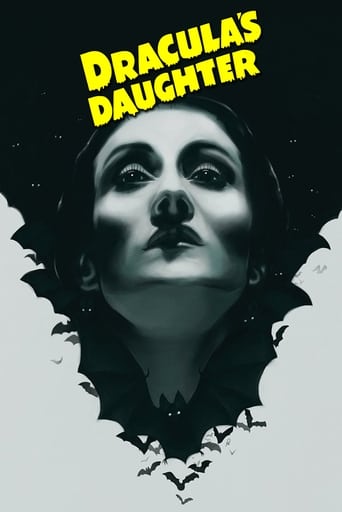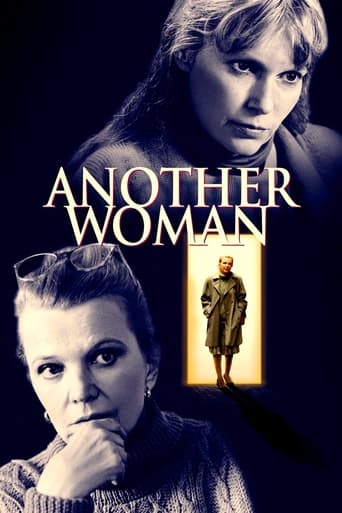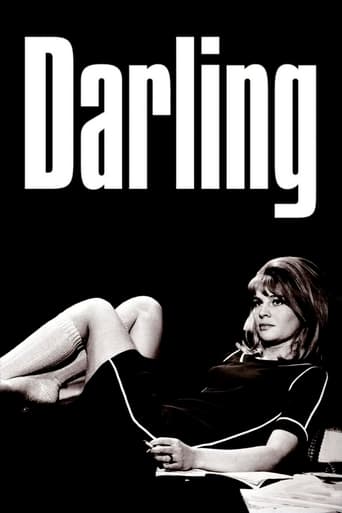
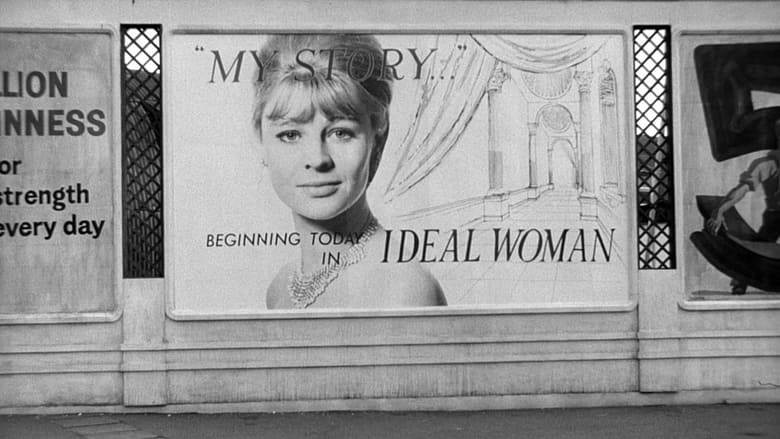
Darling (1965)
The swinging London, early sixties. Beautiful but shallow, Diana Scott is a professional advertising model, a failed actress, a vocationally bored woman, who toys with the affections of several men while gaining fame and fortune.
Watch Trailer
Cast


Similar titles
Reviews
Must See Movie...
Good story, Not enough for a whole film
Amazing worth wacthing. So good. Biased but well made with many good points.
Worth seeing just to witness how winsome it is.
I saw this film recently when it appeared as part of Fox Classics Australia's Spotlight on British New Wave Cinema.Also included were "Look Back in Anger", "Saturday Night and Sunday Morning", "Georgie Girl" and "Alfie". What an extraordinary collection of films. I remember how exciting they were when first released - they were real game changers.Discounting obvious superficialities such as hairstyles, clothes and automobiles, "Darling" in particular still seems fresh and vibrant to me. I was surprised to read that some serious critics dismiss it these days using words like modish, trendy, flashy, cynical and most damning of all, "out of touch with the realities of the life-styles that it purports to represent". However, judging the film purely on its entertainment value today, I would be more likely to use words such as compelling, clever, poignant and original.Julie Christie captures the spirit of Diana Scott, the beautiful young model who bounces from lover to lover only to realise that she bounced one time to many; in a heart-wrenching finale, she comes to see how shallow and unfulfilled her life has been, and that it is not possible to turn back the clock.Julie Christie dazzles in this film; from this distance you can appreciate just how unique she was, and how her beauty helped define the look of the 60's. However, beyond the Swinging 60's, I think her character shows how easily doors can open for beautiful people, but if the wrong ones are chosen, eventually age and lost opportunities join forces to bring the fun to a grinding halt.Good as Dirk Bogarde is as Robert Gold, the standout for me among the other stars is Laurence Harvey. He plays a variation on the good-looking, arrogant cad that he had made his own whether from the upper class, the working class or even defending the walls of the Alamo; I've always found him eminently watchable, and he is perfect as the licentious Miles Brand.Director John Schlesinger, cut his teeth making documentaries and you can see the influence in the way the film is structured. Although some critics felt he was overly influenced by the films of Godard, Bergman and Antonioni, I would say that it was more his documentary background that allowed him to bring a fresh perspective to the film."Darling" is a great looking film that benefits from location shooting in England, France and Italy. More than just a film for the archives, "Darling" still gets you in. The film won many accolades when it was first released, and as far as I'm concerned it hasn't lost much of its lustre at all.
John Schlesinger's perhaps the only film director to mail feces to a critic. The critics loved "Darling", though, his 1965 film starring Julie Christie as Diana Scott, a vapid model who rises to the top of London's fashion scene. Like many British films at the time ("The Prime of Miss Jean Brody" et al), "Darling's" very much a reaction to a changing London. And so in response to women's rights, feminist movements, and a growth in "liberal" attitudes toward religion, sex, contraceptives, marriage and abortion, came films like "Darling", in which sex, independence, non-committance, glamour, money and female desires are seen to be "bad", "bad", "bad". Veering away from traditional morals and conservative values, in other words, leads to broken families, superficiality, advertisement junkies who worship at the cult of celebrity and brain dead independent women. A year later the British film "Alfie" would tell the same tale, only now with a vapid male lead. A decade later American cinema would begin to do the same ("Kramer vs Kramer" and various reactionary "women's pictures").What seems like a simple, prudish moral agenda, however, is made complicated by screenwriter Frederic Raphael. He juxtaposes glamorous billboards, cocktail parties, social climbers and extravagant wealth with African butlers and "World Relief" banners. Elsewhere Diana's philandering is shown to break up marriages and her "casual scheming" is shown to hurt various people. Actions have consequences, then, and desires are oft petty and selfish at best, harmful at worst. Thanks to Raphael's pen, what seems reactionary in the civil rights era now seems precedent to Generation Facebook. Interestingly, the film's plot is almost identical to 1933's "Baby Face", the Depression Era tale of a social climber who debases herself and abuses everyone in her way, all in the pursuit of fame and cash.Whilst "Darling's" first half is satirical, its second half is mostly weak soap opera. Here Diana is ruthlessly punished for her aspirations – desires the film never acknowledges are forced upon her - and finally ends up a lonely woman with seven stepchildren. Schlesinger and Raphael perhaps want you to see this as a form of comeuppance, of justice, but get more than they bargain for with Christie. Her "villain" emerges as a sympathetic character.7/10 – Worth one viewing.
Darling (1965)A black and white, Mod London romance and its aftermath, over and over, with all the tumult and glitz of the times. The events race forward and create a real tornado of activity, centering around one woman, Diana Scott, who is perfectly played by Julie Christie. Diana is as charming and beautiful as the actress who plays her, and she is drawn to men, to the movies, to modeling, and generally to success and ruin, up and down, in a wild ride.British movies had a vigorous neo-realism (British New Wave) movement in the late 50s and early 60s, and by the time of this film it had segued into a purely celebratory pop mode, cashing in on the times, and the British Invasion in music. "Darling" is kind of in both worlds, I think, the same way the 1964 "A Hard Days Night" is in both, though they are very different films. But there is a frankness to the filming that belies the (at first) entertaining and largely fictional subject. And unlike the earlier neo-real innovators ("Loneliness of a Long Distance Runner" etc.), the focus here is on a privileged class, and on the rising fortunes of Diana as she moves from one relationship to another.The filming gives these seemingly flighty, alternately glib and sad events a somberness they need. Director John Schlesinger was a British New Wave upstart, and would later do the American masterpiece "Midnight Cowboy," which might be said to have the same mixture of inventive fiction and believable raw realism.Diana is a superficial woman who cashes in on her good looks and fun temperament, and her many men never seem to mind at first. She leads, but she also get towed along, falling in love, never seeming to be quite as happy as she should. Indeed, the movie begins with her explaining through a voice-over her inner yearning for what matters in life, since it's so hard to otherwise tell. Toward the end, in Italy (after England and France had been exhausted), she says to her newest man, "If I could just feel complete." And she means it. But then, in the next scenes, she's having fun again, telling lies and losing her bearings.Christie is a marvel, really, even though you might just say she's playing herself (though not acting out the events in her life, we hope). This is her breakout film (along with her next film, "Dr. Zhivago"), and she really does typify the Mod English girl, fresh and carefree. There is even a very brief nude shot, from behind, that is a sign of mid-60s liberation in both life and in filmmaking. Dirk Bogarde is certainly excellent, too, and subtle, and indeed the whole cast is first rate, maybe because everyone is playing their contemporary selves with fictional names.So the movie is terrific, even if it sometimes seems to keep meandering through the paces over the whole two hours. It wraps you in its world. Inevitably the outcome is as somber as the greys of the filming. What else would happen to someone who can't find love, or happiness, or meaning? It's impossible to really feel complete, as a person, if you search outside yourself too much, and hers is a superficial world of her own making, Diana is a superficial woman with lots of unexplored depth.The writing here is totally first rate, the filming is first rate, the editing and pace first rate. It's simply a well made movie about a contemporary dilemma. "Thank God it's never too late," she says at the end, and in fact you know that she should really say, "God, everything stays the same." I don't think there is meant to be an echo here of Grace Kelly in particular, but there is a similar arc to Diana's career (and her name, of course, predicts a later Princess Diana). Diana's apparent sexual freedom is laden with that old convention of marriage (which she early on wisely says she doesn't want) and so some extent she can be a freewheeling young woman partly because she is always taken care of, and increasingly so. An interesting take on whether this is an accurate picture at all of the times is in this short apolitical article: www.socialistreview.org.uk/article.php?articlenumber=10813.This movie ranks, for me, almost up there with "Alfie" and "Georgie Girl" (two of my favorites) as a look at the times in England. Honest, sometimes disturbing, and artistically considered. Don't miss it.
Darling is known generally as an iconic "Sixties" movie. It is at once a product of its time and a still-born anachronism. Though conceived and shot in 1964-65, there is nary a hint of the Beatles and their ilk, who by the time this film went in front of the cameras were unquestionably the major pop cultural phenomenon on earth, and certainly in Britain where this story takes place. The characters who parade before us in this slickly packaged satire are far more evocative of the earlier "La Dolce Vita" period. Perhaps the newly emerging youthful counterculture is absent because the groupings visited here are, in contrast to the many- millioned teenage Beatles fans, older, more rarefied and further up the social ladder in corporate boardrooms, haute-couture industry gatherings, mainstream television production units, the profit-driven B-movie exploitation industry, and the haunts of continental royalty. Sparkling and memorable as it is, the musical scoring by John Dankworth was also dated by mid-1965 when this film came out.The satire is often from the finger-pointing, underscoring school. Best example: A portly dowager in furs at a charity function stuffs an hors d'oeuvre into her mouth with a bejeweled hand as a speaker pompously thanks those present for fighting the scourge of hunger in the world.Screenwriter Frederic Raphael and director John Schlesinger organize their material in semi- documentary fashion with voice-over narration by the title character, Diana Scott (Julie Christie) in order to reveal her hypocrisy as she describes various episodes in her life while the unfolding screen actions ironically contradict her words. She portrays herself verbally as innocent, sensible and basically decent when in fact she's selfish, dishonest and miserable. The underlying causes of her selfishness, dishonesty and misery are neither explained nor explored, but she is presented in a way that encourages us to regard her as a micro-consequence of the crass, materialistic, soulless macro-society around her. The episodes in her bumpy road to despair succeed one another briskly enough to keep us diverted and shaking our heads at the imperfect human types on display. The arc of the story takes Diana higher and higher on the material plane until she can rise no more, only to find emptiness at the top. The point seems to be "looks, money and prestige aren't everything – but look how entertainingly we're presenting that platitude." This film and Doctor Zhivago, released shortly after, made Julie Christie the most honored and publicized actress in the world for about a year and it's interesting to compare her Diana Scott with her Lara character in David Lean's epic. Lean, a stern and experienced taskmaster, got more solid acting out of her. Schlesinger's grip is looser, resulting in a more uninhibited but less disciplined performance. As one flavor of the media-created "It" girls of the Sixties (Ann Margret, Twiggy, Goldie Hawn being other flavors) she embodied a certain attitude toward life that was in the air in the industrialized world in those days, an informality of demeanor which some would call proletarian or others would call "beatnik"; hers was a looser, more naturalistic look, a beauty outside the parlor. Julie Christie was beautiful without a speck of makeup while the wind was blowing her hair in four different directions and seemed to be an entirely different person depending on which angle she presented to the camera or what kind of light was bouncing off her partly chiseled, partly soft and sensuous features. Her very presence lent a depth that may not have been written into the character. With another actress, one can only wonder how effective this film would have been. Her chief fellow players, Laurence Harvey and Dirk Bogarde, give splendid support, as does the rest of the cast. But the spotlight is definitely on Julie; it is her showcase.



